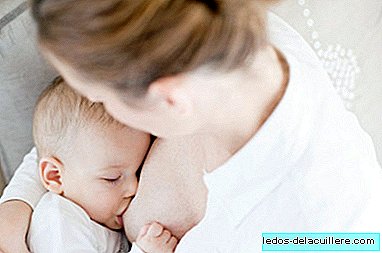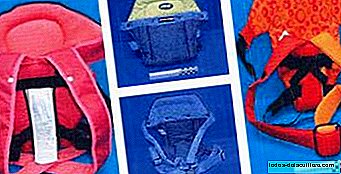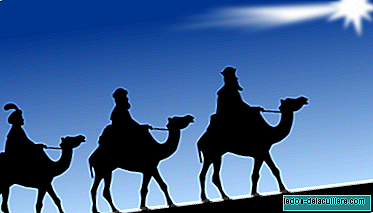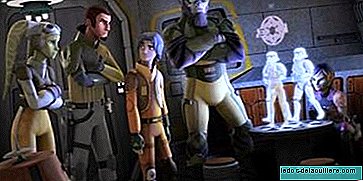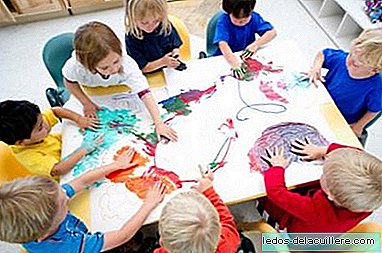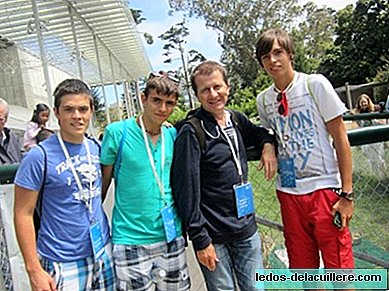
Antonio Guillén is a professor of Biology and Geology currently assigned to the IES "Battle of Clavijo" of Logroño. He is a passionate lover of Nature. He is Professor of Natural Sciences and a Doctor of Biology from the University of Salamanca. He has participated in numerous research projects related to Botany, Microbiology, Ecology, Paleontology and Prehistory. He is also the author of several dozen scientific articles and some books. Antonio has received some of the most prestigious awards in the development of his work, including several of Educational Innovation at a regional and national level, the National Prize for Scientific Photography and the Giner de los Ríos for the improvement of Educational Quality. He has worked with his students and has been awarded in several regional or national competitions, such as Dissemination, Science in Action, Young Researchers, Biotechnology or Reporters of Planet Earth. The first prize in the world contest called by Google for the work developed with its students "The Hidden Life of Water" has meant international recognition to a magnificent work carried out from a Spanish public education center.
The three students who appear in the image and who won, with Antonio, the first prize of the Google Science Fair, have finished fourth of the ESO in the IES "Battle of Clavijo" of Logroño. The next course students will learn in an Institute that teaches the Scientific Baccalaureate and Antonio will switch to the IES "Sculptor Daniel de Logroño" to teach subjects of the Baccalaureate of Sciences: Biology and Geology, Biology, Earth and Environmental Sciences, etc. . to your new students. The center to which Antonio leaves specifically teaches Scientific and Health Sciences Baccalaureate and the Battle of Clavijo does not.
How did you hear about the Google Science Fair contest and how did you prepare for the competition involving the students.
The information of the contest came to us through an email communication addressed to the Directorate of our Institute, this information with the contest rules was sent to us at the initiative of the Ministry of Education of La Rioja and the truth is that we were encouraged to participate several times, both through email and telephone, but we had very little time to prepare the materials and the video that was required for registration.
We were doubting whether to introduce ourselves or not, so I talked with the students, Sergio, Marcos, Iván and Miguel Ángel, about the possibility of registering. For four years we have been conducting research on microscopic organisms that live in water, we have collected a lot of data, performed several research papers in which we have obtained results and developed a lot of material.

I proposed to introduce ourselves although insisting that we would have to work hard, especially because of the lack of time and they accepted the challenge, so we got down to work and within a week we managed to prepare the materials that were required ... and after To do so, we forgot about it, until we were told, several months later, that our work had been selected among 70 other finalists worldwide, it was all news !! and we still didn't imagine what would come next.
How do you get the attention of children for science?
I am passionate, I enjoy learning and I try to share this enjoyment and this learning and knowledge in class, for this I look for close examples, of our most immediate reality, examples drawn from everyday life, often from experiences lived by students for them to serve of model. I also like to experiment and make proposals for students to improve them and from them start working.
In the classes I look for interaction, participation, answering all the questions that may arise or raising questions, being careful not to intimidate students.
Then all the ideas arisen or the proposals are ordered, conclusions are drawn and if you can propose activities, always on a voluntary basis. The key is to generate an optimal work environment, in which any idea that arises, oddly enough, can be integrated and positively valued, that creates confidence in students and encourages them to investigate and work.
What kind of additional activities could be done in schools so that children can approach science more easily especially since they were little?
Any experimentation activity, however small, penetrates in a very deep way, especially in the smallest ones.
From observing how a seed germinates, planting a tree, observing how a mold develops, looking through a magnifying glass or a microscope and interpreting what is seen, collecting fossils in the field, etc. Any activity in which the student feels the protagonist of the experience of research and discovery can leave that flame of curiosity on forever.
What pages on the Internet do you consult to disseminate science among your students?
Generally, when some practical work is proposed, which is usually exposed to the rest of the class, it is they who seek information on the web. They share with their colleagues the sources of documentation consulted and we always make a critical assessment of the use they have made of the resources obtained from the Internet.
On the website of our department we have selected some of the Internet spaces that we consider most interesting, in relation to the subjects taught at ESO and Baccalaureate.
A magnificent work is the infographics published by the newspapers El País and El Mundo in their digital editions and we always recommend your inquiry.
How the use of technology is impacting on children's education and training
The Internet has meant an extraordinary revolution whose scope I still think we do not know where it will lead us, but not only the Internet, digital technology, from photography to the most sophisticated recording devices installed on satellites, greatly expand our knowledge possibilities. The fact of being able to access knowledge and information through the Internet is like being able to have at your fingertips all the resources of an immense library, but also the possibility of interaction and communication, multiply extraordinarily the possibilities of using the information.
Where can the inconveniences come from? In my opinion, if we get lost in that immense network in which, as in life itself, we must know how to distinguish what is good from what is not and it is here that teachers and parents have the possibility to help that students acquire that ability.
Another important issue is that we must make an effort so that our young people understand that all these technologies constitute a tool and that they are not an end in themselves, tools that can help us to understand our real world and to improve it, not only materially but also on a human level, it can allow us to improve as people.
Why little science and scientific method are practiced in the classroom
I think that, sometimes, we worry too much about the fulfillment of the schedules and that we leave the last end of our work somewhat forgotten. Sometimes it is very difficult to find the balance between what is the theoretical knowledge acquired through the study of what is the experiential knowledge that can be obtained through experimentation. It is often thought that practicing the scientific method is very complicated and immediate results are sought from a theoretical learning, which is forgotten as quickly as learned. A small and simple experimental activity not only allows us to know what it has been designed for, it often opens the door to other knowledge, leaves an indelible mark and opens a window to world knowledge from another new perspective, that of direct experience itself.
Please share with other readers other resources on the Internet that you use
In addition to the resources on the web that I mentioned before, for years we work, with great enthusiasm in a gallery "Project Water" on the microscopic organisms that live in the water. This is a wonderful universe full of life and unimaginable beings. On Flickr it is possible to find the Microagua gallery. We have also created some interactive applications for students to get closer to the world of the tiny, this is the application of "The Hooke Window". Applications are also available on the human body in the Ministry of Education: "our body in a" click "and on the world of plants.

How you work for your students to speak in public and present their work
Both from the beginning, and throughout the course, I propose to the students the voluntary realization of research activities, I help and guide them to find topics that may be of interest and that have to do with the contents that are going to be treated along the course. I help you in the process of preparing the work script and I also ask you to voluntarily present a summary of the work in front of your colleagues using images, videos of your own documents in power point or in any other format or without any default format.
Little by little they lose the fear of exposing in public and learning to distinguish what is important and accessory.
This work helps them organize and structure ideas and is a good exercise in synthesis. At the end of his presentation I assess his work by commenting on what is good and how it could be improved. And always the reward of a good grade
And here the interview with Antonio Guillén. I thank you very much for the generosity with your answers, your extraordinary dedication as a teacher and we wish you many more successes. For me it has been a pleasure and a real finding that education in Spain is at an excellent level.




